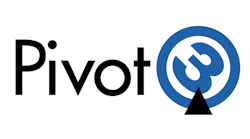The once separate worlds of IT and physical security continue to converge. Technology changes faster than ever, and modern organizations seek out infrastructure that is cost-effective, simple to manage and efficiently scales as their needs grow.
Advancements in technology, such as IP cameras, propel a great interest in video data. This is not just a hunch; market statistics, in fact, demonstrate this fact. It is estimated that video surveillance systems will produce more than 15ZB (zettabytes) of data in 2017 – that’s more than double the amount of the next-highest application.
Video has become the ultimate big data application.
As the value of video increases and new use cases continue to emerge, systems integrators need to help their customers ensure their investment is protected. System failures – where live or recorded video or security information becomes inaccessible and data lost – leave organizations exposed to increased risks, vulnerabilities and operational interruptions.
Think about your customers’ businesses – is system failure or downtime even an option? Most likely, the answer is a resounding no.
IT Approved
IT technologies are having a significant impact on the security space. Terms such as “software-defined storage,” “server virtualization” and “hyper-convergence” are more common than ever and should become standard vocabulary to fulfill customer demands. Systems integrators can modernize business by investing in internal IT capabilities as well as educating sales and technical leaders on the continued benefit of IT solutions in the surveillance arena.
The bottom line is that as a systems integrator focused on future opportunity, you must be well-versed in the deployment of modern, advanced systems and embrace solutions battle-tested in the IT world to deliver the most modern and beneficial infrastructure to your clients. Your teams need to be savvy to the value IT technologies deliver.
At the same time, your customers' IT departments need to know that your firm can be trusted to advise about network best practices that meet their IT requirements.
Key Strategies for Integrators
Never before have modern organizations sought out such high levels of business and security intelligence. In today’s market, it is all about data: How much can be captured? How can it help the business? What data is valuable and what is not? Systems integrators must know how to answer these questions to help customers achieve more informed decision-making.
Video surveillance is a critical component of an organization’s security infrastructures because of its ability to provide stakeholders with a visual representation of potential anomalies, events and trends. Additionally, there is growing benefit to using video surveillance as a security and business optimization tool.
Systems integrators need to be savvy regarding the technical differences, design challenges and cost considerations of the growing demand for video data and converged applications – specifying solutions that can meet the 24/7 demands of modern data and security operations centers. The simple fact is that converged data (such as video) can add significant business value to global organizations that seek to boost system performance and drive operational efficiencies that reach far beyond traditional use cases.
As the need for storage continues to grow alongside the demand for a greater amount of data, so too does the technology and demand for data to be easily accessible, safe and importantly, secure. The protection of data is a very real priority for both physical and IT security professionals, and integrators can help lead the way.
A Changing Landscape
A comment I often hear from those outside the industry is that the security and surveillance markets move more slowly than other markets. At times, I do agree but I think we’ve made significant strides in terms of innovation. Therefore, now is the time to change the outside perception. Integration firms can lead the charge, leveraging best practices and solutions to realize new business opportunities and revenue streams.
Since data is so important, the process of storing this data becomes one of the most critical components of a system. When it comes to video storage, there are myriad terms to learn, memorize and master.
Hyper-converged infrastructure (HCI) solutions offer a much simpler, more practical and cost-effective alternative. HCI greatly reduces data center costs and complexity by integrating SAN and server virtualization capabilities into a single software-defined infrastructure deployed on COTS server hardware. The advantage of HCI is that it provides the benefits of enterprise-class IT infrastructure – performance, resiliency, efficiency and scalability – without the high cost and complexity.
HCI appliances designed for the needs of the video surveillance market are simple to deploy and scale. Because the storage pool is virtualized, storage is completely scalable: Individual appliances can be added to meet growing surveillance needs. Adding a camera here or there when a hot spot or interest area is identified or increasing resolution is easily accomplished.
Because video data is highly variable, unpredictable and write-intensive, traditional storage systems, such as NVRs, must often be over-provisioned to plan for the worst-case scenario. But performance suffers during video data spikes, and often leads to degraded operations that lead to video loss.
Integrators should specify solutions that streamline system performance, and improve the capacity for video and data capture. Solutions that are designed for write-intensive environments, such as IP video surveillance and enterprise IT applications, are ideal choices to deliver high levels levels of performance, resiliency and scalability – enabling customers to protect and ensure availability of critical video surveillance data.
Integrators are tasked with ensuring surveillance customers can benefit from the best practices and solutions, and increasingly those systems are the ones proven in the world of IT. Additionally, you can make sure that your business does not miss out on valuable hardware sales. The interest in new technology is growing at a rapid rate and you are in a unique position to transform your customer’s surveillance environments while exceeding IT expectations.
Selling Points
Knowledge is power, but ultimately, customer satisfaction is the key to an integrator’s success. The following are strategies are pivotal to ensure access to future opportunities while ensuring sustained success with current customers:
- Improve IT capabilities: Partner with solution providers who are experts in IT and are willing to invest in your success as a subject matter expert. Position your organization as one that customers can rely on for expertise.
- Spell out the differences: Help customers understand that video surveillance data is different than “normal” IT data, and the implications this brings to their server and storage infrastructure. Work with your customers to define the business, operational risk and impact of system downtime and data loss while educating them on the proper solutions.
- Become IT savvy as quickly as possible: IT is increasingly involved in server and storage infrastructure buying decisions, preferring to make purchases from traditional channels. This process can lead to loss of hardware revenue for integrators.
- Provide great service at all times: Once the initial sale is confirmed, make a commitment to provide timely delivery and installation of systems. Afterward, provide timely and efficient support when issues arise.
Brandon Reich is General Manager for the surveillance division of Pivot3. Request more info about the company by visiting www.securityinfowatch.com/10214659.




